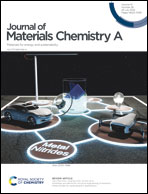Research progress of asymmetrically coordinated single-atom catalysts for electrocatalytic reactions
Abstract
Energy has increasingly become the material basis for the development of human society and occupies a strategic position in the national economy. Single-atom catalysts (SACs) are widely recognized as promising catalysts in the chemical and energy industries. Therefore, it is of great practical significance to develop SACs with ideal intrinsic activity, high stability, and low cost. Compared with traditional M–N4 active sites, metal–nitrogen–carbon (M–N–C) catalysts with asymmetric coordination structures have been rapidly developed in the field of catalysis. This could be attributed to their unique electronic and geometric structures, making asymmetric coordination a novel and attractive strategy. In this paper, several typical asymmetric M–N–C SACs are summarized, namely asymmetric M–Nx SACs, asymmetric M–Nx–O/S/P/B/Cl/I SACs and asymmetric M–M SACs. The research development and application of these advanced catalysts in electrocatalytic reactions such as the oxygen reduction reaction (ORR), CO2 reduction reaction (CO2RR), hydrogen evolution reaction (HER), oxygen evolution reaction (OER) and nitrogen reduction reaction (NRR) are systematically illustrated.

- This article is part of the themed collection: Journal of Materials Chemistry A Recent Review Articles


 Please wait while we load your content...
Please wait while we load your content...